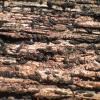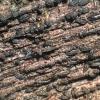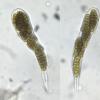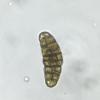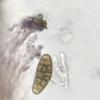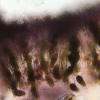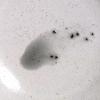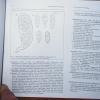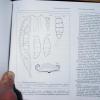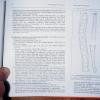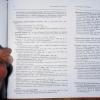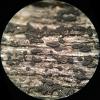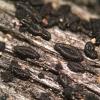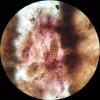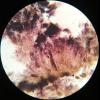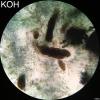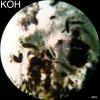
15-12-2025 15:54
 Johan Boonefaes
Johan Boonefaes
Unknown anamorph found on the ground in coastal sa

15-12-2025 15:48
 Danny Newman
Danny Newman
Melanospora cf. lagenaria on old, rotting, fallen

15-12-2025 07:05
 Danny Newman
Danny Newman
Pseudosclerococcum golindoi (det: Zotto)near Cosb

15-12-2025 11:49
 Danny Newman
Danny Newman
ITS sequences from the following two collections B

15-12-2025 07:09
 Danny Newman
Danny Newman
indet. Rutstroemiaceae sp. on unk. fallen leavesMc

15-12-2025 12:34
 Danny Newman
Danny Newman
indet. Rhytismataceae on oak leafnear Purchase Roa

09-12-2025 12:06
 Andgelo Mombert
Andgelo Mombert
Bonjour,Je recherche l'article concernant Hypobryo

12-12-2025 18:39
Mirek GrycHello everyone.Macrofeatures similar to Mollisia b
Alain
I had not considered them because it seems to me that these hysterothecia open when hydrated. The first and second photos that I posted show the difference, with the second showing the hysterothecia after they have been wet for about 1/2 hour. Eric Boehm's key describes R. dissimile: Ascospores with five or more septa ... but does not provide an illustration or a description. Is it possible for species in Hysterobrevium, Hysterographium or Hysterium to open to the degree that these do?
Thanks,
Ethan
You ask : Is it possible for species in Hysterobrevium, Hysterographium or Hysterium to open to the degree that these do?
Probably not impossible.
In Ellis & Everhart (1892), we ca read about H. vulvatum (syn. in 2018 : H. flexuosum): "Hysterothecia erumpent-superficial, scattered or gregarious, 1-3mm long, straight or flexuous; lips at first closed, then open so as to leave a wide furrow between them, mostly with 1-2 deep striae on each side, often apparently double i.e., with one set within another."
Personnaly, I observe that with H. mori : http://www.ascofrance.fr/search_recolte/2861
Make a difference between Rhytidhysteron and other Hysteriaceae without molecular data is not always so easy.
Good luck !
Alain
Since 2018 I have occasionally come across this Hysterioid with purple pigments in the centrum, mostly in the Northeastern US, but also in Appalachian North Carolina. I found it in Staten Island NYC a few weeks ago.
It appears this is similar to Hysterographium minus. Boehm in the 2009b paper wasn't able to get sequence data for 4 species purported to be Hysterographium including Hg. minus, and left them as species of Hysterographium... "until such time that sequence data are available".
There is a single ITS sequence in GenBank for something labeled Hg. minus, but my collection's sequence does not match it very closely.
I missed the significance of the green extractable pigments back in 2018 (last photo in my original post). When mounted in 3% KOH the purple pigments become green. In the description for Hg. minus Amano says:
"Asci bitunicate...in 2% KOH staining pale green or greenish white, staining more intensely above" but doesn't explicitly mention purple pigments in the centrum.
Jayasiri and Hyde et. al. transferred Hg. minus to the genus Purpurepithecium, and say:
"Hysterographium minus is morphologically similar to Purpurepithecium murisporum in having pigmented dictyospores with a brick-red epithecium." Brick-red? So perhaps I don't have a match... or perhaps it is a problem in the interpretation of colors... or perhaps the color temperature of the light from my microscope makes my collection look purple?
For my most recent collection from Staten Island:
Asci: 73-75 x 19-21µm, the collection may have been over mature and there were not many asci available.
Spores:
5-9 septate with multiple vertical septa.
30.8-39.5 x 11.3-16.4µm
Me 35 x 13.9µm
Q 2.3-2.9
Qe 2.5
N=10
Lastly, I wonder if this Hg. minus is ever found by anyone else here on AscoFrance? Alain? is this one you have seen?
Ethan
